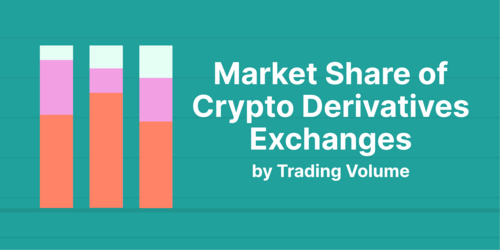This article is sponsored by Huobi DM.
Huobi DM (Huobi Futures), the crypto derivatives trading platform of the publicly listed Huobi Group, has just launched its perpetual swap trading feature at the end of March 2020. This latest move demonstrates how serious Huobi is in stepping up its game en route to becoming one of the top crypto trading platforms in the world.
In this introductory guide, we will be exploring the basics of Huobi DM’s latest perpetual swap contract. We will focus on the underlying contract mechanics, its features, and close with a quick run through of how easy it is to get started trading perpetual swaps on the platform.
Crypto Perpetual Swaps – What’s the Difference Compared to Futures?
To the unfamiliar, a futures contract and a perpetual swap appear completely different. In the ‘traditional’ finance world, a futures contract lets you take a position on the future direction of an asset’s price. A swap, on the other hand, is when two parties exchange cash flows/liabilities from two different financial instruments. For instance, they might swap a fixed interest rate for a floating one.
But in the crypto world, a perpetual swap is essentially a futures contract with no expiry date. The only reason the term ‘swap’ is there is because the contract is settled in the underlying crypto, instead of fiat. So, for instance, a BTC/USD perpetual swap, in a traditional futures contract, should be settled in USD. But because of regulatory requirements, it is easier to settle it in BTC instead. Hence the underlying is considered ‘swapped’. But it is still just a futures contract.
The Mechanics of Crypto Perpetual Swaps
In a futures contract with an expiry date, the contract price and the spot price will converge by the delivery date. So, if someone took a long position on a contract and the underlying spot price did indeed increase, then the futures contract will also increase in price, which will make the long position profitable (and vice versa for a short position).
But how does it work if there is no expiry date?
First, understand that in crypto perpetual swaps, you are trading against another trader, not the exchange itself. Because perpetual swaps have no expiry or delivery, they require something called a funding mechanism to anchor the contract price to the spot price. The funding mechanism is how the trader with the losing position pays the trader in the winning position. This occurs at predetermined periods—usually every 8 hours.
When funding rates are negative, this means that the price of the perpetual contract is lower than the mark price (spot price). This means asset prices are trending up, and those in the short position must pay those in the long position. When funding rates are positive, the price of the perpetual contract is higher than the mark price, meaning asset prices are trending down. Therefore, those in the long position must pay those in the short position.
Keep in mind that—on Huobi DM at least—funding rates are paid exclusively between the traders. Huobi DM does not charge any fees on said funding.
Leveraged Trading and Crypto Perpetual Swaps
Huobi DM also allows you to take leveraged positions on crypto perpetual swaps. Currently, it enables you to take on as much as 125x leverage for BTC and 75x for ETH (this will go live on April 3rd, 2020).
Keep in mind that the greater the leverage used, the smaller the unfavourable price movement needed to wipe out your account position. As such, to exceed 20x leverage on Huobi DM, you must first sign a supplementary agreement acknowledging that you understand the risks. Consider that at 100x leverage, a 2% price movement could either return double your money or put you in the 100% negative position.
Speaking of which, what happens if a margined account goes into the negative position?
Leverage, Liquidations, and the Huobi DM Insurance Fund
Continuing from the above scenario, if you had a 100x leveraged position and the price moved by 2% in your favor, you would expect to see a 200% return. However, what happens if that price movement causes the trader on the other side of your trade to go into a negative balance?
In the traditional finance world, if a trader’s account goes negative, they will be required to top up said account. If they don’t, the exchange can and will pursue legal remedies, and said trader may even be forced to file for bankruptcy.
This does not happen in crypto—crypto exchanges and trading platforms do not chase down traders with negative balances. However, this creates the risk that the winning trader may not always receive the full amount of their expected profit.
This is why Huobi DM has an insurance fund (specific to each coin), to help compensate the winning traders in such situations. The initial insurance fund starts at USD500,000 for each new future or perpetual swap trading pair. As for how this insurance fund is topped up—when the position moves against a trader enough such that it causes their account to be liquidated, any spreads from said liquidation will go toward the fund.
On top of this, Huobi DM also shares a 20,000 BTC security fund with its parent company, plus an additional USD200 million via a wager mechanism to cover potential clawback losses (clawback, or ‘socialized losses’ occur when a platform’s insurance fund cannot cover margin call losses). Huobi’s parent company has also maintained a zero clawback record since launch.
Note: In March 2020, Huobi DM moved toward a ‘partial liquidation’ mechanism to better protect its users during times of severe market volatility. Instead of a ‘one shot’ liquidation the moment a user’s margin hits the trigger point, liquidation will now be done in stages. There will also now be a liquidation circuit breaker function in place that will temporarily stop liquidations if large price dislocations occur.
Trading Crypto Perpetual Swaps on Huobi DM – A Quick Start Primer
Now, let’s move on to how you can quickly get started trading perpetual swaps on Huobi DM (note that Huobi DM also has standard futures contracts with weekly, bi-weekly, and quarterly expiration dates; these were launched much earlier).
After signing up and creating your account, you can access the perpetual swap markets from Huobi DM’s main page as below.

This takes you to the main trading interface.


The top half of the screen shows the standard price chart, with the order book in the right column. At the bottom half is the box for placing orders, as well as your usual order/trading history. At the bottom left is your ‘scorecard’ showing your assets, margin, equity, and profit/losses.
Now let’s take a closer look at the order box.

You will note there are two types of orders available for perpetual swaps—limit orders and trigger orders.
In a limit order you list down the highest price you are willing to buy at or the lowest price you are willing to sell at. The system will automatically prioritize the closest price to the limit, but it will not exceed it. There are also three additional options for limit orders:
-
Post Only: Post only orders will go to the order book, meaning traders can be market makers instead of takers.
-
Immediate or Cancel (IOC): Order must be partially or fully executed within a few seconds, with the unfilled portion being cancelled.
-
Fill or Kill (FOK): Order must be fully executed within a few seconds, otherwise the order is cancelled. There will be no partial fulfillments.
If none of the above options are selected, the default will be that the order is always valid.
Trigger orders are like pre-set limit orders. Once the contract price hits the trigger, the system will execute at the pre-set price and quantity. Here’s how the order box will look if you select ‘trigger order’.

The green and red sliders at the bottom can be used to adjust the contract amount based on percentage of funds available. Alternatively, you can just input the amount manually.
At the top right, you will notice three small boxes. The ‘Cross’ is purely an FYI—letting you know that your margin balance is used to cover all your open positions. ‘Cont’ allows you to switch the contract unit from Cont (1 Cont = USD100) or to BTC. And the last box is the amount of leverage you are using—clicking it will open a slider you can use to adjust it.

If you want to close your positions, simply select the ‘Close’ tab, which will switch the order box to the following.

And that’s it! Huobi DM’s interface is highly user friendly, even beginners should be able to figure it out within a few minutes.
Conclusion: Huobi DM Focuses on a Smooth User Experience and Robust Risk Management
Perpetual swaps are not that new in crypto. In some respects, Huobi DM is late to the game. But by biding its time, it has managed to enter the space with an intuitive user experience and a robust risk management system in place (its partial liquidation mechanism, for instance, is the first of its kind). If you’re interested in trading perpetual swaps, Huobi DM is definitely a player to consider.
This is article is sponsored by Huobi DM.

Ian Lee is a freelance writer specializing in the areas of finance and all things crypto. He also has over five years of experience in investment banking. Follow him at Ian Lee.









 Or check it out in the app stores
Or check it out in the app stores